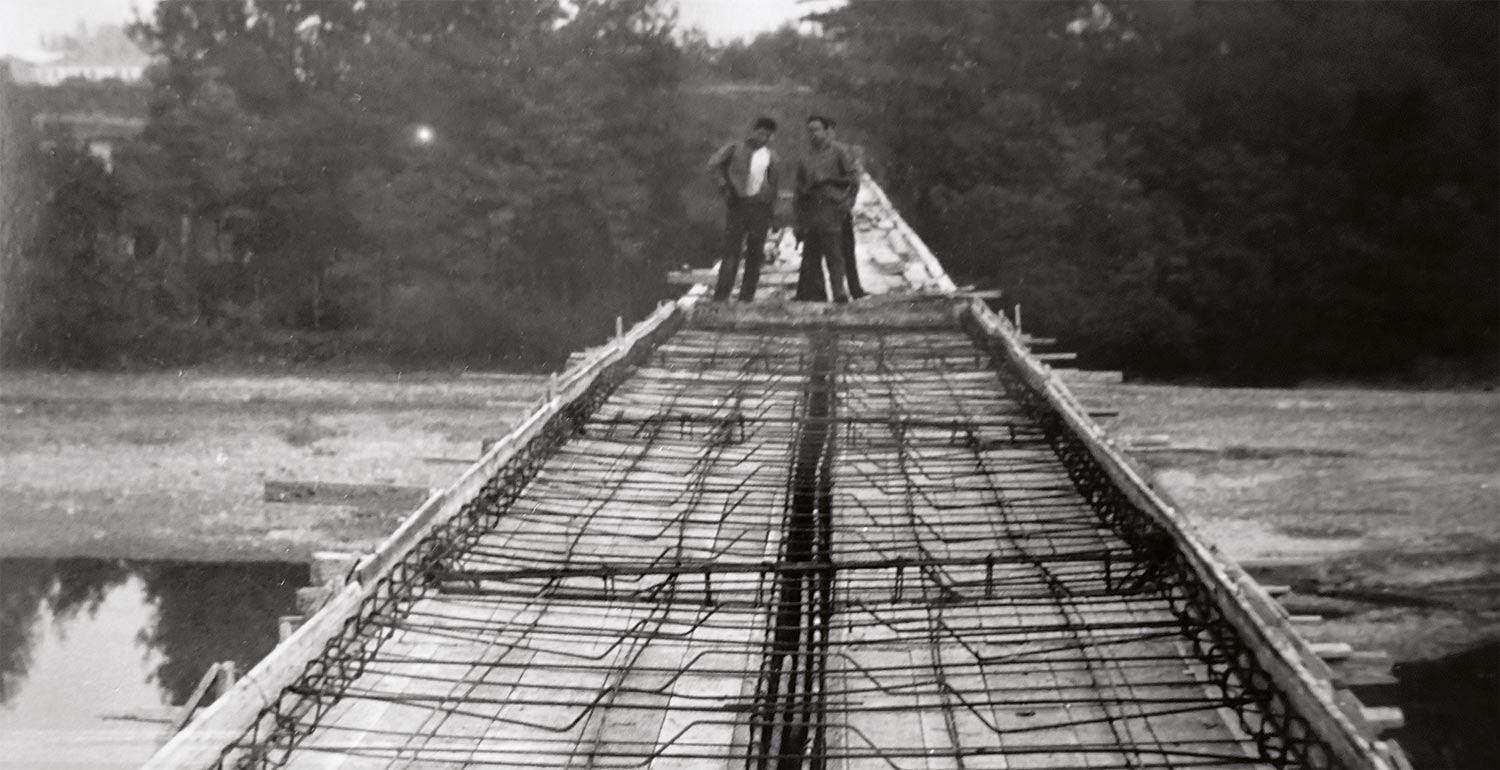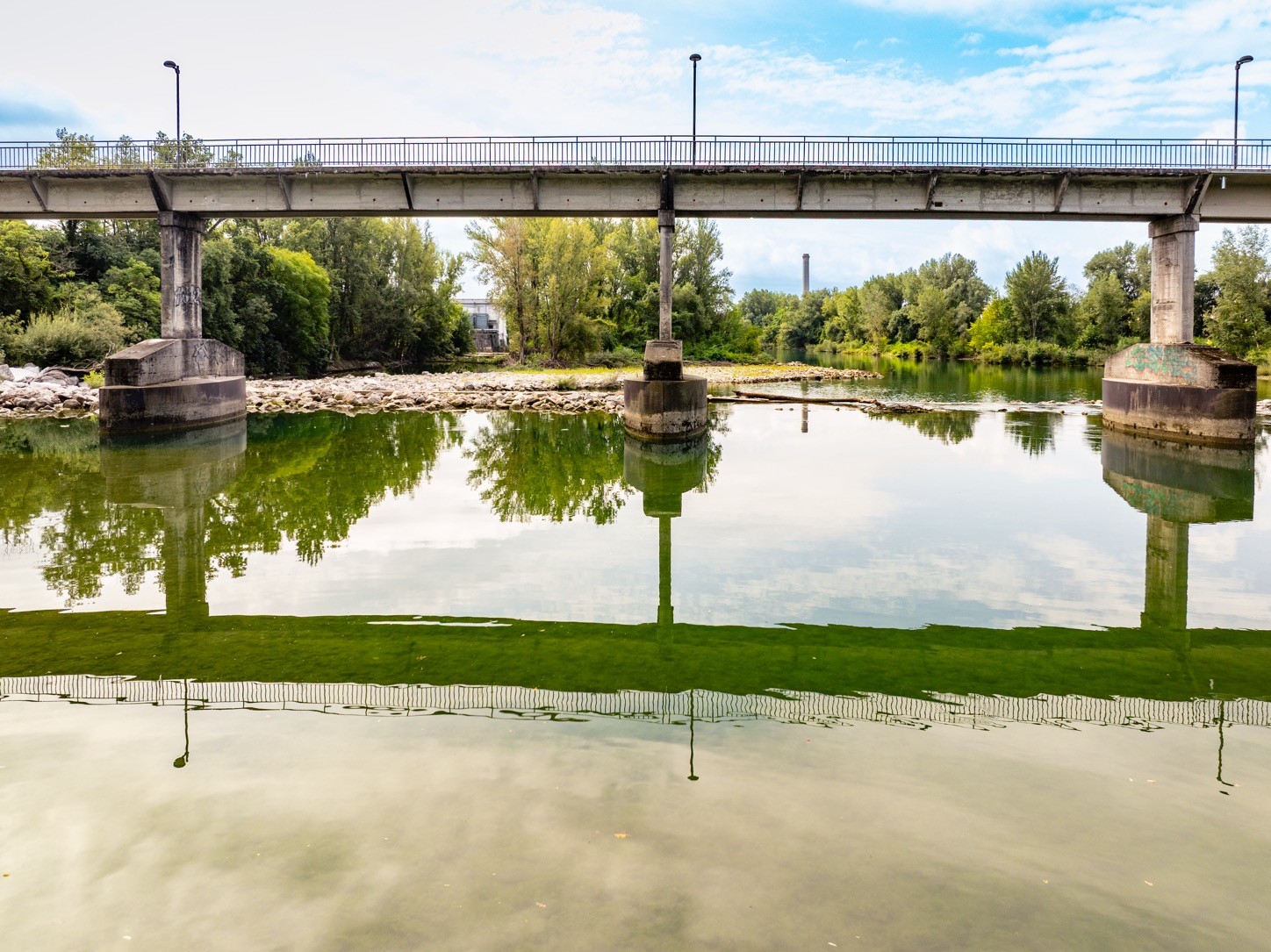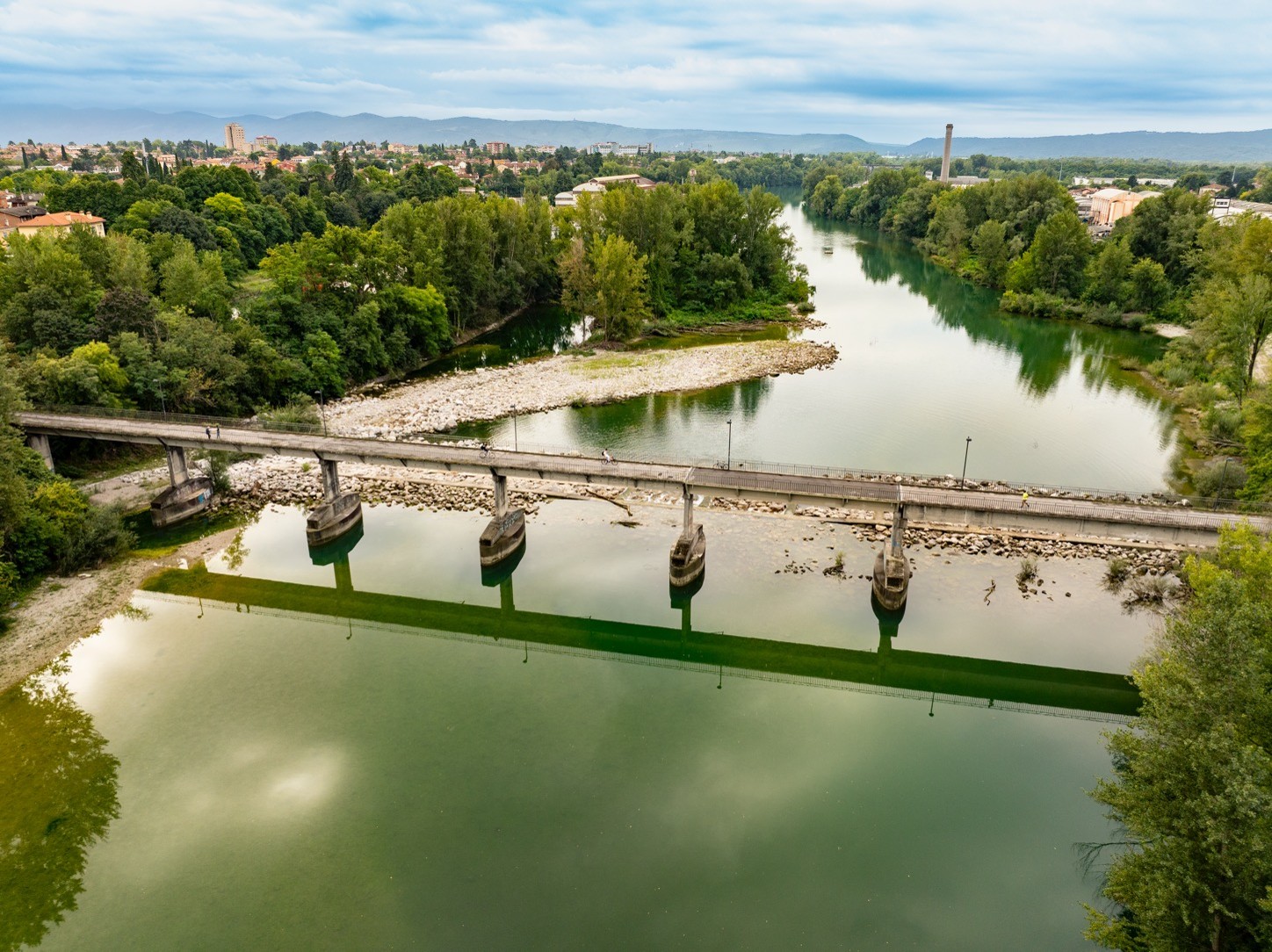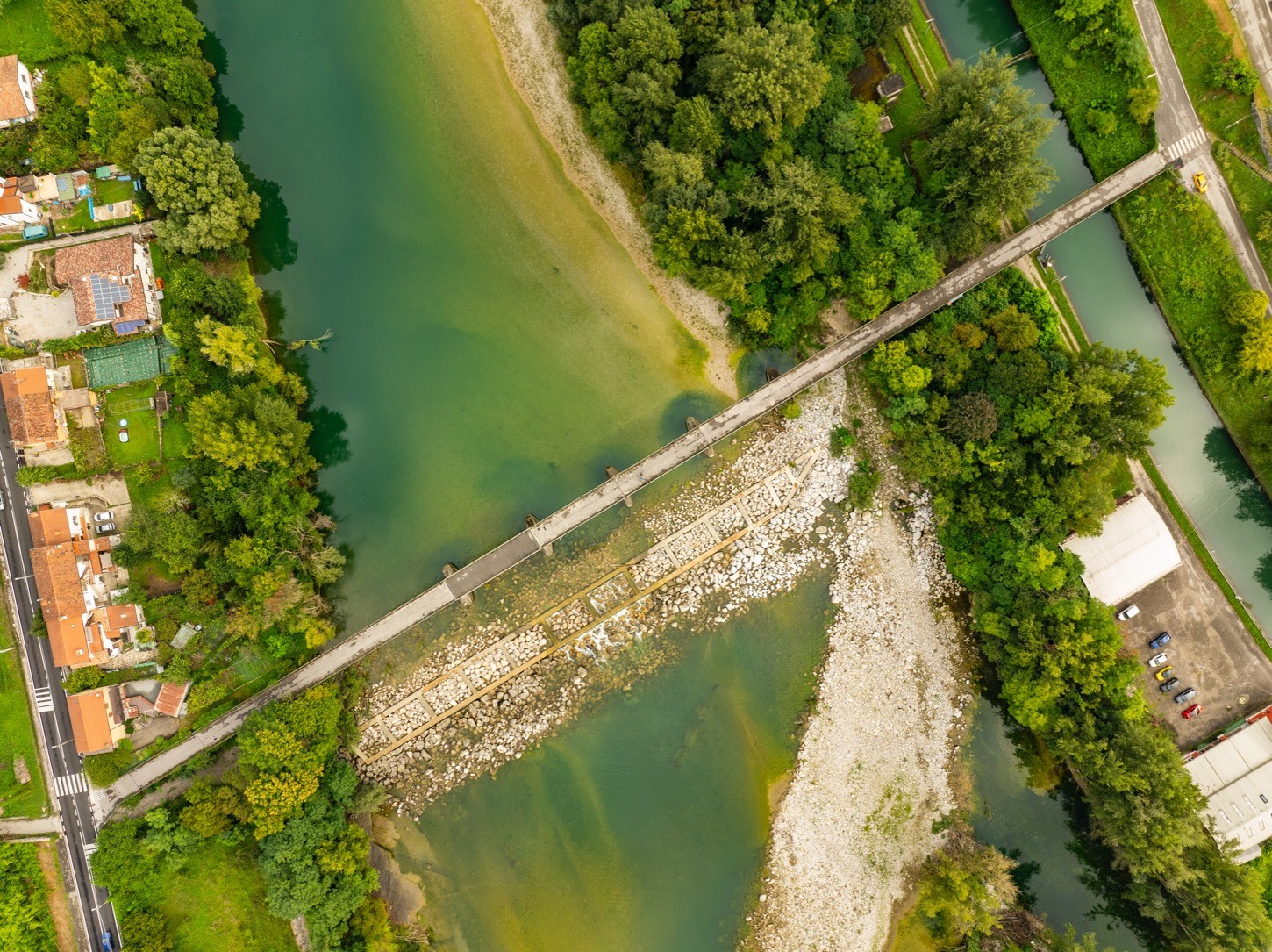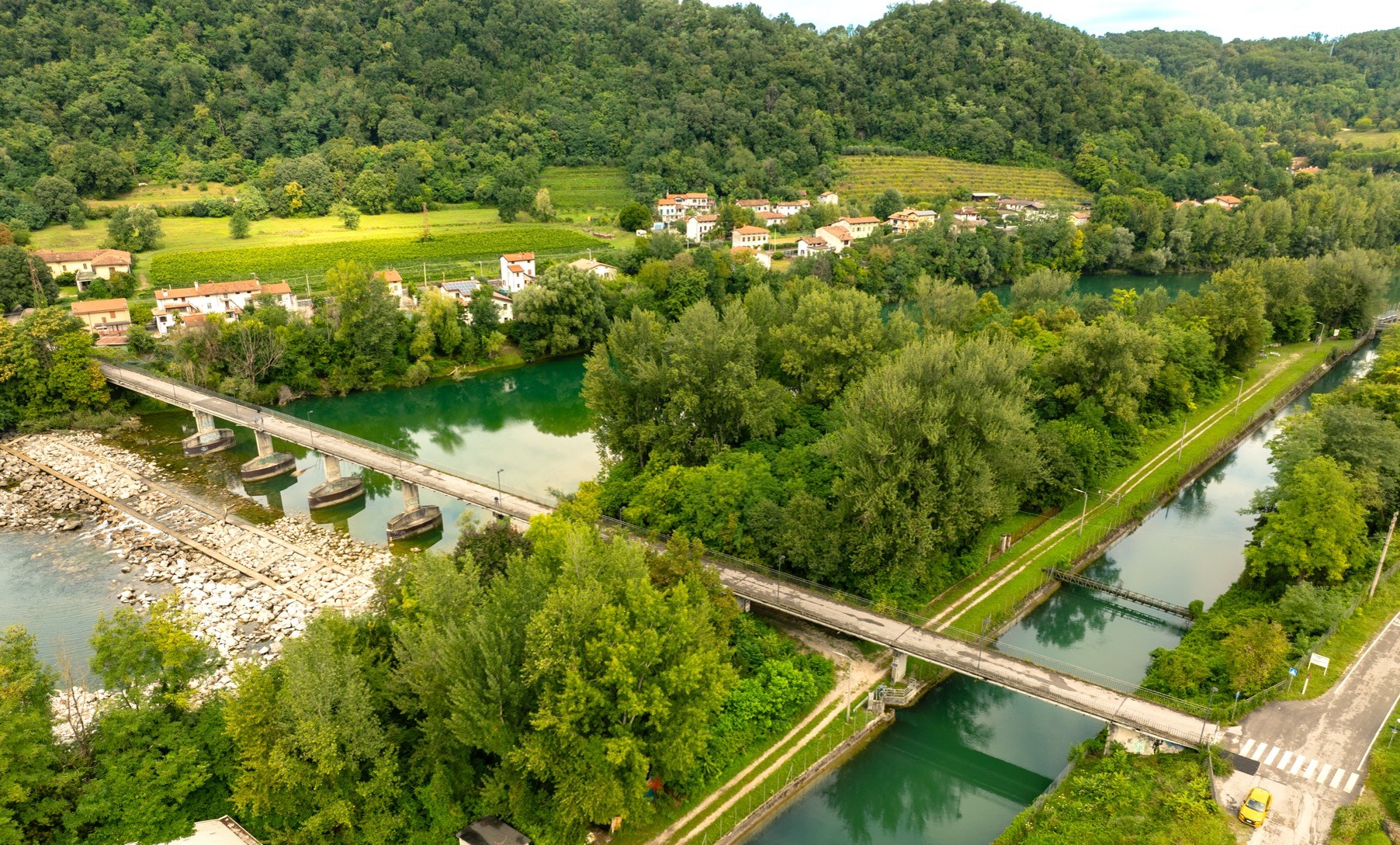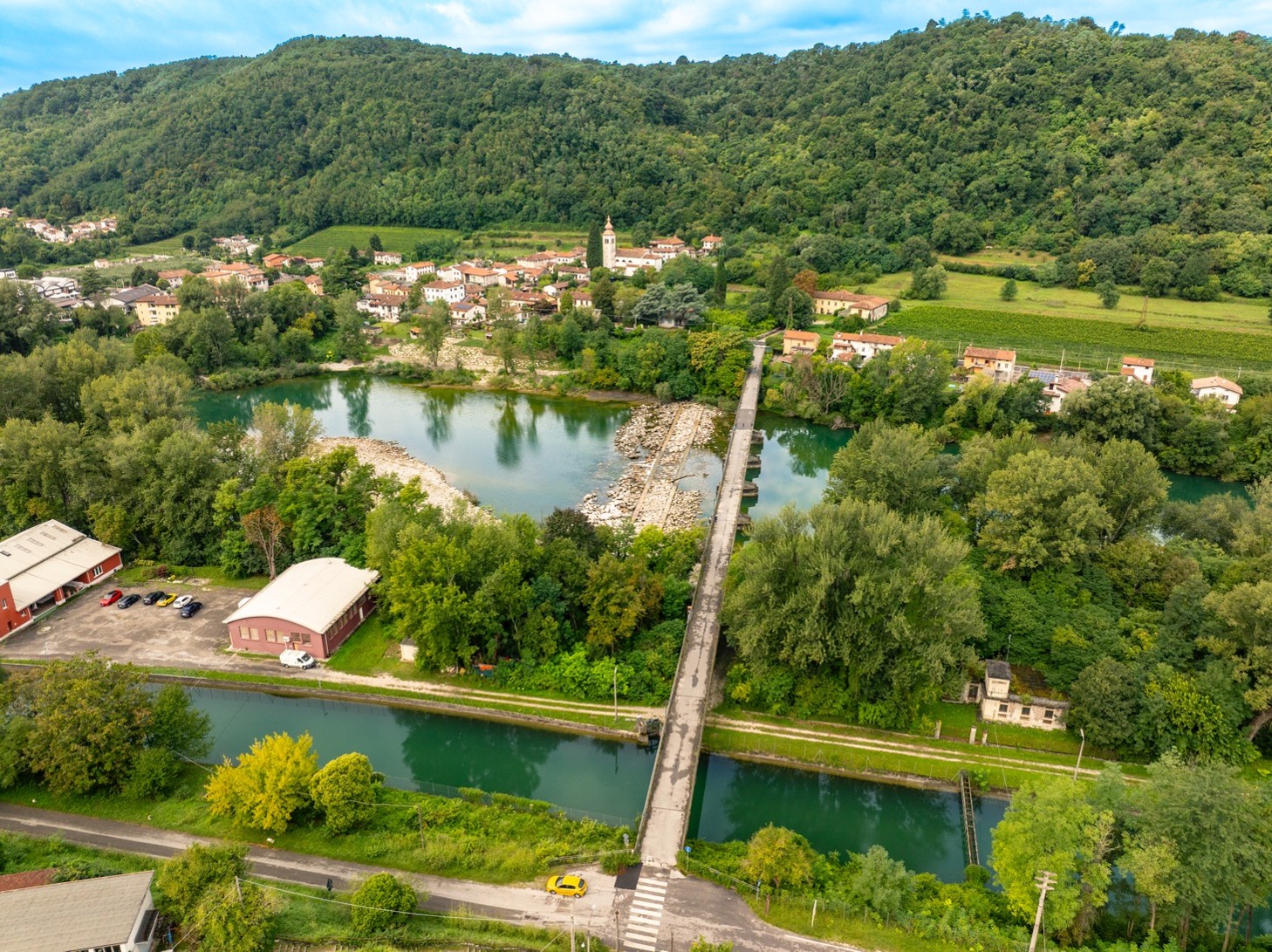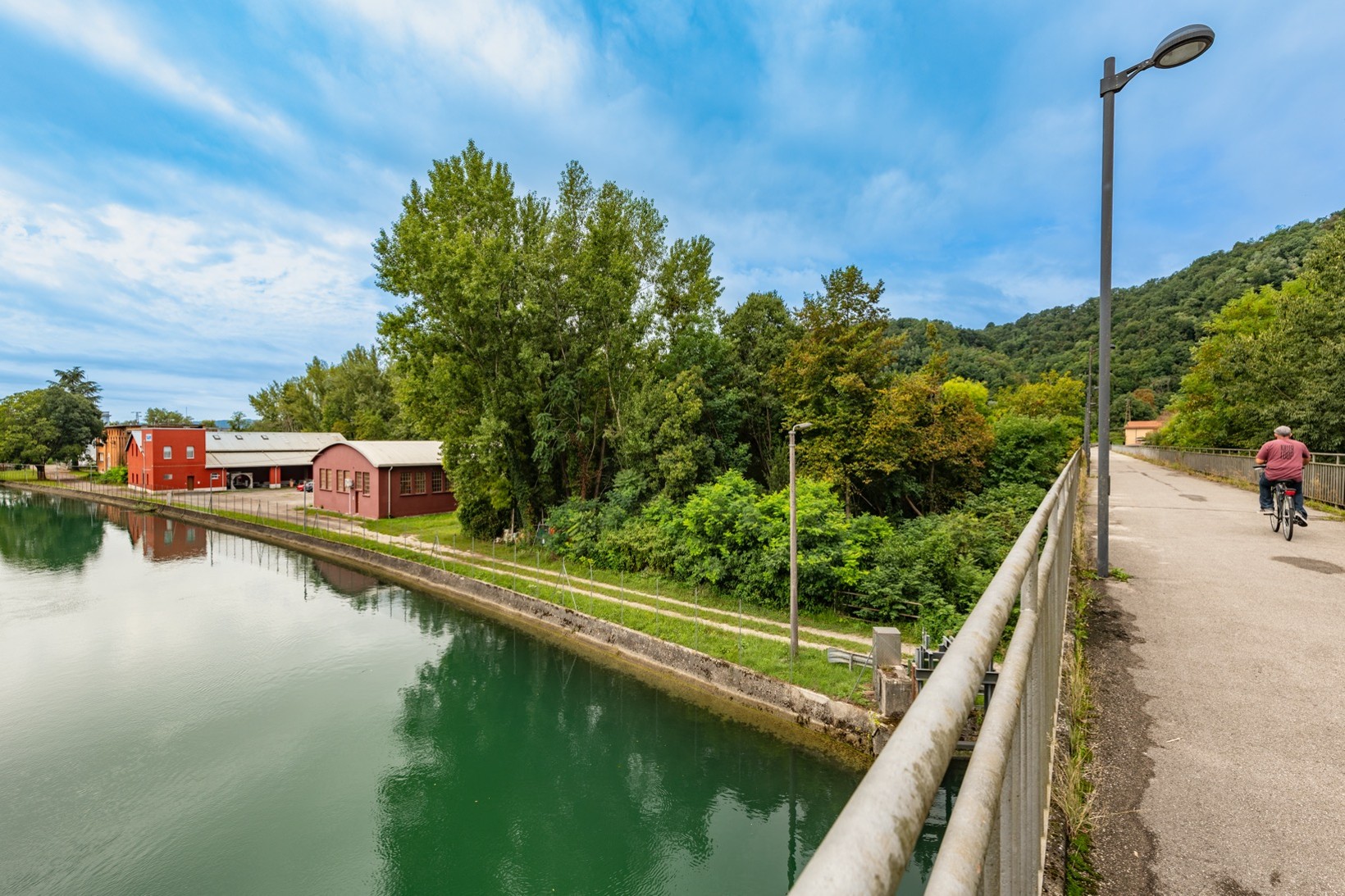straccis

Piedimonte Footbridge
HISTORY
The Straccis footbridge is a significant historical and cultural landmark in Gorizia. Since its inauguration in the 20th century, it has served as a vital connection between different areas of the city while witnessing numerous historical events. The footbridge was originally constructed in the early 1900s to provide a direct route between Piedimonte and the factories across the Isonzo River, supporting the district’s industrial development. Initially built as a wooden pedestrian structure, its history has been marked by various challenges. Following damage from flooding and conflict-related incidents, the bridge was comprehensively restored in 1947 after World War II. By 1960, the wooden structure had deteriorated beyond use and was replaced with a 2.50-metre-wide reinforced concrete footbridge. Another setback occurred on 18 October 1961, when flooding of the Isonzo River destroyed two pylons and three spans. The bridge achieved its current configuration in 1972 when it was widened to 5 metres to accommodate light vehicle traffic, along with modifications to span dimensions and reinforced abutments and piers.

BRIDGE CONSTRUCTION AND STRUCTURAL ENGINEERING
The footbridge intersects with Via Brigata Cuneo at Km 1, extending 245 metres. It connects the left bank (latitude 45.94929, longitude 13.60271) to the right bank at Via Brigata Casale (latitude 45.94878, longitude 13.60610). Located 50 metres above sea level, this straight-girder bridge features eleven pairs of reinforced concrete foundation piles joined by reinforced concrete cross beams. The structure features 12 spans—eight at 20.5 metres each, one at 41 metres, and two approach slabs of 17 and 22 metres. The bridge deck is 5 metres wide and 1.82 metres high, supported by two longitudinal prestressed reinforced concrete T-beams. Downstream, a reinforced concrete weir and cyclopean boulders protect the riverbed level near the foundations from erosion and settlement, ensuring the structure’s long-term stability and safety. The footbridge is not only crucial for pedestrian connectivity, but also because the DN 400 pipeline of the Gorizia Municipal Aqueduct runs beneath its deck. Upstream, a diversion channel extends over 800 metres from the Isonzo River to feed the Straccis hydroelectric power plant, with a vertical drop of 5.54 metres. Downstream, remnants of infrastructure remain visible in the form of a partially deteriorated weir that once channelled water to power the hydroelectric operations at the Brunner Cotton Mill.BRIDGE CONSTRUCTION AND STRUCTURAL ENGINEERING
The footbridge intersects with Via Brigata Cuneo at Km 1, extending 245 metres. It connects the left bank (latitude 45.94929, longitude 13.60271) to the right bank at Via Brigata Casale (latitude 45.94878, longitude 13.60610). Located 50 metres above sea level, this straight-girder bridge features eleven pairs of reinforced concrete foundation piles joined by reinforced concrete cross beams. The structure features 12 spans—eight at 20.5 metres each, one at 41 metres, and two approach slabs of 17 and 22 metres. The bridge deck is 5 metres wide and 1.82 metres high, supported by two longitudinal prestressed reinforced concrete T-beams. Downstream, a reinforced concrete weir and cyclopean boulders protect the riverbed level near the foundations from erosion and settlement, ensuring the structure’s long-term stability and safety. The footbridge is not only crucial for pedestrian connectivity, but also because the DN 400 pipeline of the Gorizia Municipal Aqueduct runs beneath its deck. Upstream, a diversion channel extends over 800 metres from the Isonzo River to feed the Straccis hydroelectric power plant, with a vertical drop of 5.54 metres. Downstream, remnants of infrastructure remain visible in the form of a partially deteriorated weir that once channelled water to power the hydroelectric operations at the Brunner Cotton Mill.
CURRENT STATE OF THE BRIDGE AND FUTURE DEVELOPMENTS
In response to the Morandi Bridge incident in Genoa (2018), this infrastructure underwent inspection as part of a broader inspection campaign. The assessment, which extended to the nearby Piuma Bridge, identified structural concerns, including exposed reinforcement bars and moisture penetration. The engineers developed four potential intervention scenarios to address these safety concerns, with estimated investments ranging from 1 to 8.8 million euros. The improvement programme encompasses seismic and structural reinforcements designed to strengthen the footbridge and prevent further damage, with targeted repairs to be implemented in phases. The most prominent renovations involve safety modifications to the parapets, which are readily apparent upon inspection. These essential upgrades ensure the continued safety and functionality of this vital crossing for pedestrians and cyclists who rely on it daily.
